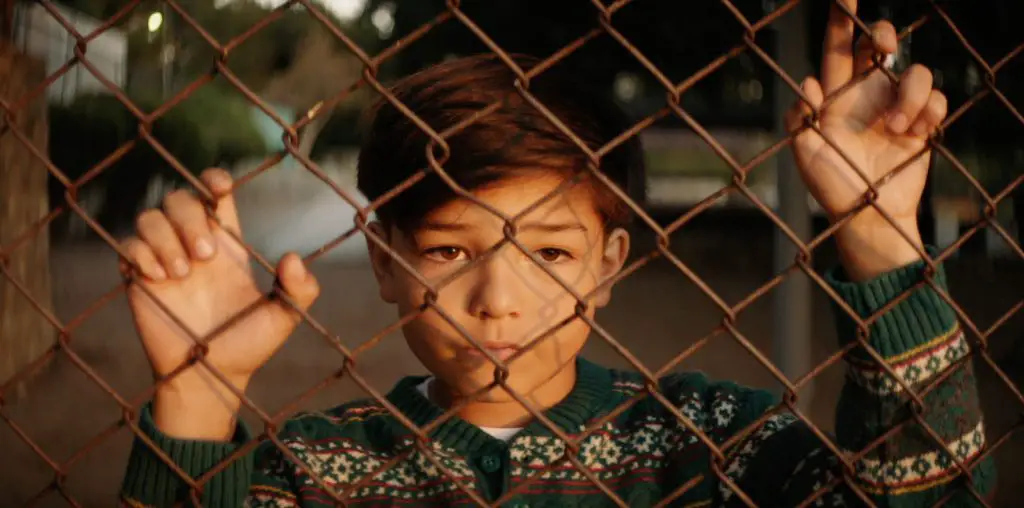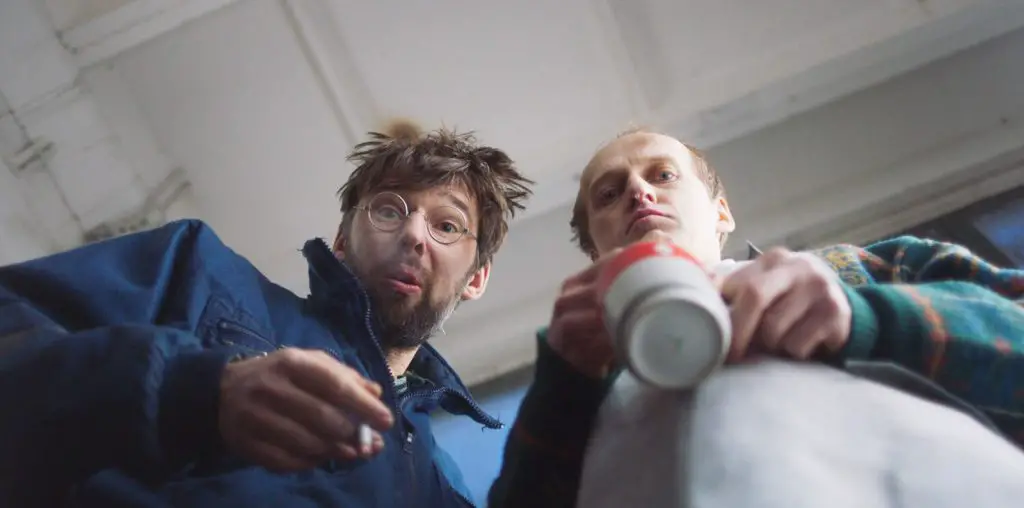
Maybe it’s because I’m from the country rather than the city, but New York has always seemed like a strange dreamlike place to me. I imagine it to be as old as the old Gods and as ancient as the mountains; as if it was a lost city that existed eons before the settlers swindled it away from the Indians, a wild and untamed place with dark corners where terrible things happen far away from human eyes.
So, it’s with these bright and cheerful thoughts percolating in the back of my mind that I went to see “Mulberry Street” at the Fantasia Film Festival, and I’m sure that they had the effect of putting things in the proper context; because the people who made “Mulberry Street” probably think of New York in a similar way. With the exception that this wasn’t written from the perspective of a stranger, but of someone who has intimate knowledge of the rhythm and flow of the place; someone who can sit by their window late at night and hear the heartbeat of the city like it was a living hungry thing.
Off the top of my head, I can’t really think of another recent example of filmmaking in its purest form that tops “Mulberry Street.” Made for a tiny budget and shot entirely on location, “Mulberry” tells the story of a group of soon-to-be-evicted apartment dwellers as they deal with an infectious outbreak transmitted by rats that transform people into feral aggressive creatures, trapping them in their neighborhood.
Back in 1968 a guy called George Romero directed a movie called “Night of the Living Dead,” and that no-budget B&W film is now universally understood to be an analogy to Vietnam and the Civil Rights movement; which were hot political issues at the time. While other films have borrowed the zombie part and the people trapped in a farmhouse part, “Mulberry Street” is as close you’ll ever get to a true spiritual descendant to the political side of “NOTLD,” as it updates the themes to 9/11 and the War on Terror, while at the same time spinning a damn good yarn about a monster invasion.
Not that it ever waxes philosophical about this in broad obvious strokes. Everything in this movie is done in the spirit of minimalism. Partly this is due to the absence of a proper budget, but there’s also the feeling that the people who made the film wanted to avoid the useless exposition and dialogue that plagues so many other productions. The happy result is that not one scene feels staged and there’s an organic quality to the film where you don’t get the impression that anything is happening for any other reason than the fact that: “it’s life”.
In fact, the film doesn’t feel like it has a story, no more than real life would have a specific singular story. Instead you flit through peoples daily routines and peek into what happens to them on the worst night in their lives. You have a retired boxer named Clutch who is waiting for his daughter to come home from Iraq after being wounded there. You have Clutch’s love interest who has to juggle raising a rebellious teenage son and working as a waitress in a local bar. You have Clutch’s gay neighbor friend who has a refreshingly non-stereotypical relationship with Clutch. You have the World War 2 veteran who’s confined to his bed and has to breathe from an oxygen tank. You’ve got the landlord who has to keep the complex running despite the fact that it’s been condemned and is falling apart.
These characters aren’t in the film to add local “color”, they’re in the film because they inhabit the world of “Mulberry Street” and just happen to be there when the events of the film happen. There’s an unforced element to the plot that the writer in me admires. To tell you the truth, most wannabe writers always get it a*s backwards. They start with a story first and then add characters to it, Nick Damici and Jim Mickle have written the characters first and then added story and plot. That’s a whole different animal my friends, and that’s the way good writers should do it.
It’s all about the simplicity and purity of your craft. You have to ask yourself “How can I tell this story with the least amount of words and images?” Then, you look at whatever it is that you’ve created and ask “How can I enhance some of these words and images for maximum artistic effect?” It’s all about knowing when to say nothing and when to say something. You can’t be taught purity in acting, purity in directing, purity in writing, purity in film. It’s something you have to figure out by yourself and, thankfully, Mickle and Damici have.
Which is why, in the end, it IS a little funny that this film’s villains are human beings that have mutated into rat monsters. But you know what? That doesn’t matter. It really doesn’t. Whether its zombies, rabies infected people, CHUDs, vampires, werewolves or masked insane slashers going after babysitters, there was a time when those creatures had no established lore and the filmmakers had to make them frightening for the very first time; and the people behind “Mulberry” do just that with their own creatures. In fact, it would have been lazy to simply pick an existing monster so they could use the street cred already established by someone else. Not only that, but the fact that people turn into rats does tie into the film’s subtext about how the rich and powerful coldly view the regular inhabitants of the world as nothing more than vermin to be “taken care of”.
So the whole rat monster thing? Cool in my book.
Finally, “Mulberry Street” will stand forever as a reminder of how good actors can elevate a film. What might have been campy and goofy in someone else’s hands comes off as dead serious here. Whether it’s the principle actors like Nick Damici who plays the main character or a guy like Lou Torres who has a small part as a bartender with like half a dozen lines, the performances are flawless. “Mulberry Street” is what you want to watch when you’re a horror movie fan.

